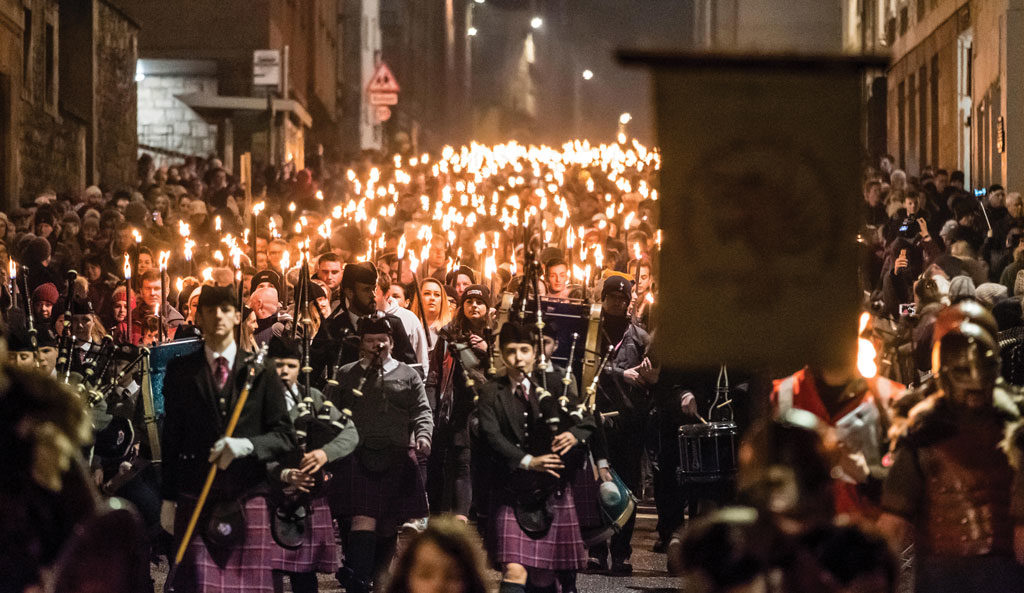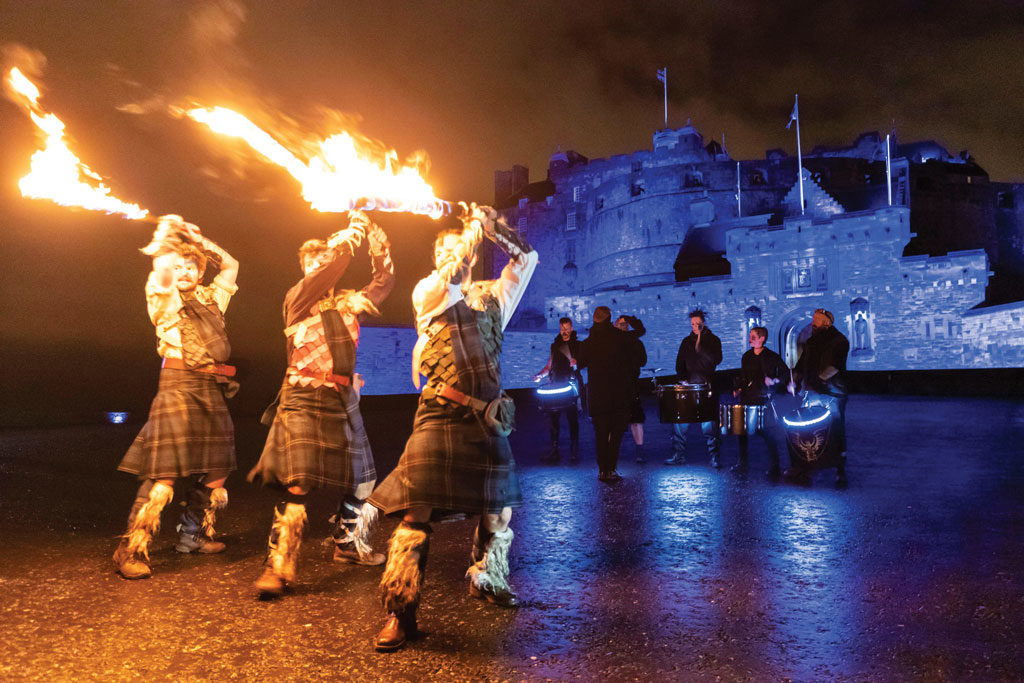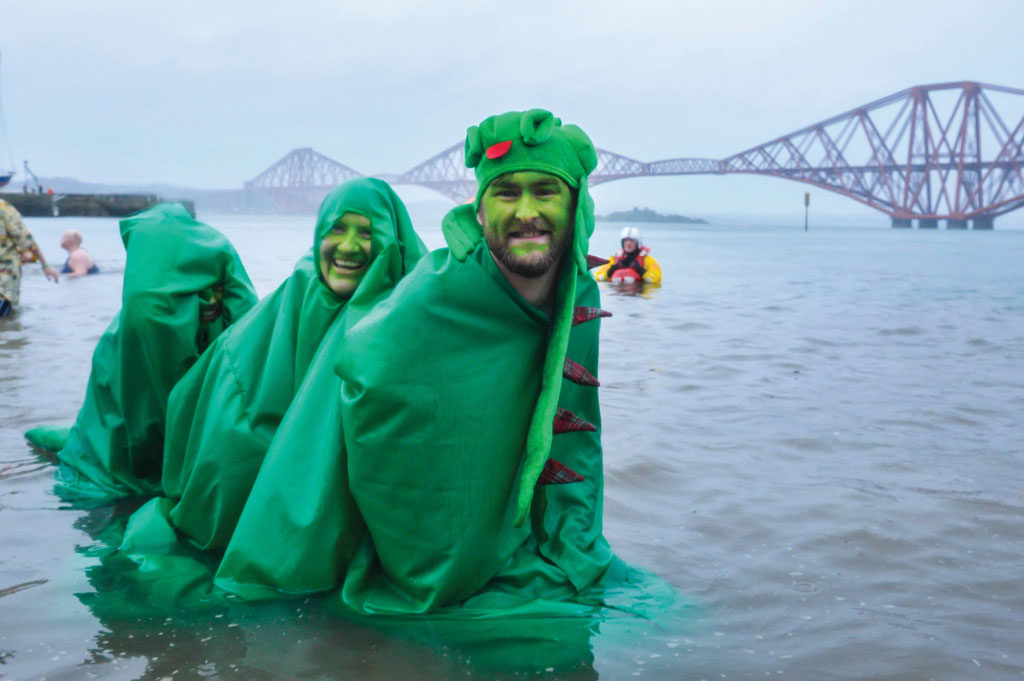Few places in the world ring in the new year with quite the same fervour as Scotland.
MORE FROM SCOTLAND MAGAZINE
Scotland is a nation of traditions and at Hogmanay, the annual end-of-year celebration, these traditions are never more prevalent. It was on my first trip to Scotland years ago that I first realised how deeply embedded in superstition and custom Scotland’s festivities are.
A group of friends and I were holed up in a cottage on the west coast of Scotland in the small township of Diabaig in Wester Ross. This part of the northwest Highlands is about as remote as it comes, with access in and out of Diabaig by a lonesome, steep, single-track road that twists and curls with edge-of-your-seat suddenness – a hair-raising experience in icy late December I can tell you.
Nevertheless, we’d prepared well. There was plenty of food in the larder, we had a decent pile of firewood and there was no risk of running out of wine, or whisky for that matter. Aside from a couple of empty cottages, we were alone to the dark skies and the still loch outside. Or so we thought.

For no sooner had we rung in the new year with a group rendition of Auld Lang Syne, than we spotted the unmistakable glow of a torch outside. Slightly unsettled, the bravest of our group opened the front door to be greeted by a trio of smiley-faced locals who came bearing gifts.
Our visitors had traipsed a mile or two in pitch darkness (there are no street lamps in Diabaig) from their home up the hill to wish us well. An hour or so later we returned the favour by following them back to their home for some sandwiches, more drinks and more music.
This tradition, known as first-footing (referring to the first person to set foot inside a house from the outside in the new year) supposedly brings luck to the household for the coming year. Typical, symbolic gifts include a lump of coal to provide a warm home, a coin to represent financial prosperity and maybe some bread and salt to signify the house will be well fed, though the specifics vary from region to region. Some folk take the tradition even further and suggest a tall dark-haired male first-footer brings the best luck, while some believe it’s unlucky if the first-footer is a red head.
On the tiny former slate isle of Easdale in Argyll, separated from the neighbouring isle of Seil by a small channel and only accessible by a small open-boat ferry, the first-footing is a little more organised, though no less fun.
Tradition dictates that everyone congregates in the Puffer pub – the social nucleus of the isle – where locals ring in the new year before setting off on a massed first-footing.
The rules are simple: any cottage that has left its outside light on signals that they are open to guests. There, you knock and present gifts before being invited in and given food and drink in return.
The circumference of the isle is under a mile and there are only around 60 inhabitants, so the distances covered aren’t huge, but the crawl still goes on until the early hours of the morning. Somehow locals still manage to get up the next day to participate in the annual football match, which takes place on the small green outside some of the former slate workers’ cottages.
The word Hogmanay is believed to date from the 17th century and perhaps comes from the Norman French ‘hoguinane’, itself a corruption of the Old French word ‘aguillanneuf’, which refers to the last day of the year.

However, many of the traditions celebrated on Hogmanay, such as the many fire festivals that take place, were probably Pagan in origin and seen as a way of cleansing off the bad spirits of the old year before entering the new year, with nuances added by subsequent settlers, such as the Vikings, who occupied Scotland from the 8th century onwards.
Perhaps the most famous of the fire festivals is the one that takes place in the Aberdeenshire harbour town of Stonehaven. During this parade, which is free to attend, locals march down the street behind a piper just before midnight, swinging balls of fire above their heads.
Meanwhile, during the Comrie Flambeaux in Perthshire, on New Year’s Eve, flaming rags tied around birch poles are paraded through the streets of Comrie at midnight in a cleansing ceremony before being thrown into the River Earn.
And finally, to Edinburgh, where Hogmanay celebrations are at their biggest and brightest. It’s no exaggeration to say that each year on Hogmanay the streets of Edinburgh are packed with revellers. The atmosphere is electric.
Festivities begin on 30 December when you can pay to take part in a torchlit parade through the streets of the medieval city, or simply watch the spectacle from the sidelines. On New Year’s Eve itself, lots of events take place almost simultaneously. There’s the famous street party, plus the concert in Princes Street Gardens and the cèilidh under the castle, all culminating in a huge fireworks display. Tickets are needed for each of these events, or climb Calton Hill to watch the fireworks for free.

The next day, the Loony Dook dip (in which hundreds of madcaps – many in fancy dress – dive into the waters of the Firth of Forth or watch in bafflement) takes place at South Queensferry for those who can manage it, because in Scotland, celebrations continue well into the new year.
MORE FROM SCOTLAND MAGAZINE

SCOTLAND MAGAZINE
Published six times a year, every issue of Scotland showcases its stunning landscapes and natural beauty, and delves deep into Scottish history. From mysterious clans and famous Scots (both past and present), to the hidden histories of the country’s greatest castles and houses, Scotland‘s pages brim with the soul and secrets of the country.
Scotland magazine captures the spirit of this wild and wonderful nation, explores its history and heritage and recommends great places to visit, so you feel at home here, wherever you are in the world.